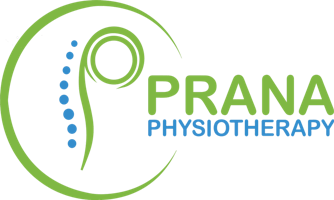News
Exercise found to reduce risk of experiencing episodes of neck pain

All reviews on the topic up to this point suffered from certain flaws
Neck pain is one of the most common and significant health problems throughout the world. It ranks as the fourth leading cause of disability, and it’s estimated that about 48.5% of the population will deal with neck pain at some point in their lives. Individuals with neck pain generally improve over time, but in many cases the pain comes back and can end up becoming a long-term problem. This shows why it’s important to establish measures that will prevent neck pain from developing in the first place, but the available guidelines for neck pain treatment don’t include any specific recommendations for prevention. In addition, although there are large-scale reviews—systematic reviews—on the topic, they all suffer from some flaws and limitations, which means that better quality evidence is needed. For these reasons, researchers decided to conduct a powerful pair of studies called a systematic review and meta-analysis to determine what strategies were most effective for preventing an initial episode of neck pain in individuals without symptoms.
Five databases searched for relevant studies
Investigators used five medical databases to search for randomized-controlled trials (RCTs) that evaluated the effectiveness of prevention strategies for neck pain, and only accepted those that fit specific criteria. RCTs randomly assign participants to a treatment group and then compare them to one—or more—other groups to gauge how well an intervention works, and they are considered the gold standard of individual research studies. This search led to 5 RCTs being accepted into the systematic review and meta-analysis, which contained data on 3,852 participants. Once collected, the findings of these five RCTs were compared to one another, and their quality was assessed to better indicate if these findings were reliable.
Exercise identified as an effective strategy for preventing neck pain
Two of the five RCTs investigated the use of exercise programs, and researchers deemed that there was moderate-quality evidence that exercise does substantially reduce the risk of a new episode of neck pain. These exercise programs lasted for 9-12 months and consisted of various exercises that were intended to improve the strength and flexibility of the neck muscles and improve body awareness, stability and aerobic abilities. The individuals who participated in these programs reduced their risk for developing neck pain by about half. The three other RCTs investigated the use of ergonomic programs, which instruct patients make modifications to their workstations and homes that are intended to improve posture. Researchers concluded that there was low-quality evidence that these ergonomic programs do not reduce the risk of a new episode of neck pain. Based on these findings, it appears that exercise is a particularly effective strategy for reducing the risk of developing neck pain. Individuals who work a desk job and are concerned that neck pain may be a problem in the future are therefore encouraged to see a physical therapist for a preventative exercise program, which can put them ahead of the game. Now is also a great time of year to visit a physical therapist for those who have already met their insurance deductible or out-of-pocket maximum for 2018, as treatment may be covered for the rest of the year under some healthcare plans.
-As reported in the July ’18 issue of the Journal of Physiotherapy
Disclaimer:
The information in the articles, posts, and newsfeed is intended for informational and educational purposes only and in no way should be taken to be the provision or practice of physical therapy, medical, or professional healthcare advice or services. The information should not be considered complete or exhaustive and should not be used for diagnostic or treatment purposes without first consulting with your physical therapist, occupational therapist, physician or other healthcare provider. The owners of this website accept no responsibility for the misuse of information contained within this website.
